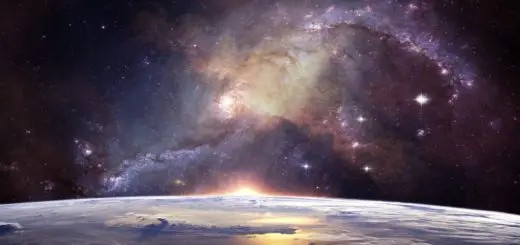Sacred Landscapes: Reverence for Earth

Looking for more amazing products? Check out our online store and explore our collection here! Happy shopping!
Before diving in, please note: This post is for informational purposes only. If you’d like to know more about how we approach topics, feel free to check out our friendly Disclaimer Page.
Hey there, amazing readers! 
We’re committed to delivering quality posts, and your support (even just sticking around despite the ads) means everything to us. So, bear with us, and thanks for helping us keep the good vibes rolling. Now, on to the fun stuff!
TRANSLATE BUTTON AT THE END OF THE ARTICLE
A Quick Overview: The Significance of Sacred Landscapes
Sacred landscapes hold a special place in the hearts and minds of people around the world.
These are places that are revered for their spiritual, cultural, and natural significance.
They are often seen as manifestations of the divine, places where the physical and spiritual worlds meet.
Sacred landscapes can be natural wonders such as mountains, rivers, and forests, or human-made structures like temples, shrines, and burial grounds.
The reverence for these places transcends borders and cultures, connecting people to the earth and to each other.
Understanding the Concept of Sacred Landscapes
Sacred landscapes are areas that hold deep spiritual or cultural significance for a particular community or group of people.
These places often have a long history of religious or cultural practices associated with them, making them important sites for rituals, ceremonies, and gatherings.
Sacred landscapes are believed to be imbued with spiritual energy, making them powerful places for prayer, meditation, and reflection.
They are seen as portals to the divine, where humans can connect with the sacred forces of the earth.
Historical Context of Sacred Landscapes
Throughout history, humans have revered certain landscapes as sacred.
Ancient civilizations built temples and monuments in alignment with the stars and the natural world, creating sacred spaces that reflected their beliefs and values.
Many indigenous cultures have maintained sacred sites for thousands of years, passing down traditional knowledge and practices from generation to generation.
These landscapes have played a central role in shaping the identity and spirituality of different cultures around the world.
Global Examples of Revered Earth Sites
There are countless sacred landscapes around the world that hold deep spiritual significance for communities and cultures.
Some examples include:
1.
Uluru (Ayers Rock), Australia – A sacred site for the indigenous Anangu people, who believe it is home to ancestral spirits.
2.
Mount Kailash, Tibet – Considered a sacred mountain in Hinduism, Buddhism, Jainism, and Bon, attracting pilgrims from all over the world.
3.
Machu Picchu, Peru – An ancient Incan city nestled in the Andes mountains, believed to have been a spiritual center.
4.
Stonehenge, England – A prehistoric monument aligned with the movements of the sun, thought to have been a site of religious significance.
5.
Ganges River, India – Considered a sacred river in Hinduism, believed to cleanse the soul of sins.
These sites are just a few examples of the diverse sacred landscapes found across the globe.
Indigenous Perspectives on Sacred Landscapes
Indigenous peoples have a deep connection to the land and view it as a living, breathing entity that sustains life.
For many indigenous cultures, sacred landscapes are not just physical places, but living beings with their own spirits and energies.
These landscapes are often central to indigenous cosmologies, serving as the foundation of their spiritual beliefs and practices.
Indigenous communities have a profound respect for the earth and its resources, recognizing the interconnectedness of all living beings.
Environmental Conservation and Sacred Landscapes
The preservation of sacred landscapes is closely tied to environmental conservation efforts.
Many sacred sites are located in areas of great natural beauty and ecological importance, making them vital for biodiversity and ecosystem health.
By protecting these landscapes, we can safeguard not only their cultural and spiritual value but also the biodiversity and environmental services they provide.
Indigenous communities often play a key role in conserving sacred landscapes, using traditional knowledge and practices to sustainably manage the land.
Rituals and Practices in Sacred Landscapes
Sacred landscapes are often the sites of rituals and practices that connect humans to the divine and to each other.
These rituals can include ceremonies, prayers, offerings, dances, and meditations that seek to honor and communicate with the sacred forces of the earth.
By engaging in these practices, individuals and communities can cultivate a sense of reverence, gratitude, and connection to the land.
Sacred landscapes provide a sacred space for these rituals to unfold, creating a sense of harmony and balance between the physical and spiritual realms.
Impact of Tourism on Sacred Landscapes
While tourism can bring economic benefits to local communities, it can also have negative impacts on sacred landscapes.
Increased visitor numbers can lead to environmental degradation, cultural appropriation, and disruption of sacred rituals and practices.
It is important for tourists to respect the sacredness of these sites, follow local customs and regulations, and tread lightly on the land.
Sustainable tourism practices can help to minimize the negative impacts of tourism on sacred landscapes, ensuring that these places remain protected for future generations.
Sacred Landscapes in Literature and Art
Sacred landscapes have inspired artists, writers, and poets for centuries, serving as sources of inspiration, contemplation, and reflection.
Literature and art often portray sacred landscapes as places of beauty, mystery, and transcendence, inviting audiences to explore the spiritual dimensions of the earth.
Paintings, poems, novels, and music that depict sacred landscapes can evoke a sense of wonder and awe, prompting viewers and readers to contemplate the interconnectedness of all life and the sacredness of the natural world.
The Role of Sacred Landscapes in Modern Society
In our modern, fast-paced world, sacred landscapes offer a sanctuary for reflection, renewal, and connection to something greater than ourselves.
These places provide a sense of grounding, reminding us of our place in the natural world and the importance of honoring and protecting the earth.
Sacred landscapes can serve as a catalyst for social change, inspiring individuals and communities to work towards a more sustainable and equitable future.
By recognizing the spiritual and cultural value of these landscapes, we can foster a deeper sense of reverence and stewardship for the earth.
Challenges Facing Sacred Landscapes Today
Despite their cultural and spiritual significance, sacred landscapes face numerous challenges in the modern world.
Urbanization, industrialization, climate change, and resource extraction threaten the integrity of these sites, putting them at risk of destruction and degradation.
Indigenous communities often face land disputes and encroachment on their sacred territories, leading to conflicts with governments and corporations.
The commodification of sacred landscapes for tourism and development further exacerbates these challenges, posing a threat to the spiritual and cultural values of these sites.
Preserving Sacred Landscapes for Future Generations
To ensure the preservation of sacred landscapes for future generations, it is essential to engage in collaborative conservation efforts that respect the rights and knowledge of indigenous communities.
Governments, conservation organizations, and local stakeholders must work together to develop sustainable management plans that protect the ecological, cultural, and spiritual values of these sites.
Education and awareness-raising initiatives can help to instill a sense of responsibility and stewardship for sacred landscapes among the public.
By honoring and protecting these special places, we can ensure that they continue to inspire and nourish our souls for generations to come.
Conclusion
Sacred landscapes hold a unique place in the hearts and minds of people around the world, serving as bridges between the physical and spiritual realms.
These places are revered for their cultural, spiritual, and natural significance, connecting individuals and communities to the earth and to each other.
By understanding, respecting, and protecting sacred landscapes, we can cultivate a deeper sense of reverence and stewardship for the earth, ensuring that these special places remain preserved for future generations to enjoy and cherish.

The Enlightenment Journey is a remarkable collection of writings authored by a distinguished group of experts in the fields of spirituality, new age, and esoteric knowledge.
This anthology features a diverse assembly of well-experienced authors who bring their profound insights and credible perspectives to the forefront.
Each contributor possesses a wealth of knowledge and wisdom, making them authorities in their respective domains.
Together, they offer readers a transformative journey into the realms of spiritual growth, self-discovery, and esoteric enlightenment.
The Enlightenment Journey is a testament to the collective expertise of these luminaries, providing readers with a rich tapestry of ideas and information to illuminate their spiritual path.
Our Diverse Expertise
While our primary focus is on spirituality and esotericism, we are equally passionate about exploring a wide range of other topics and niches 

To ensure we provide the most accurate and valuable insights, we collaborate with trusted experts in their respective domains 
Our blog originally focused on spirituality and metaphysics, but we’ve since expanded to cover a wide range of niches. Don’t worry—we continue to publish a lot of articles on spirituality! Frequently visit our blog to explore our diverse content and stay tuned for more insightful reads.
Hey there, amazing reader! 
Check out our store here and take a peek at some of our featured products below! Thanks for being awesome!










